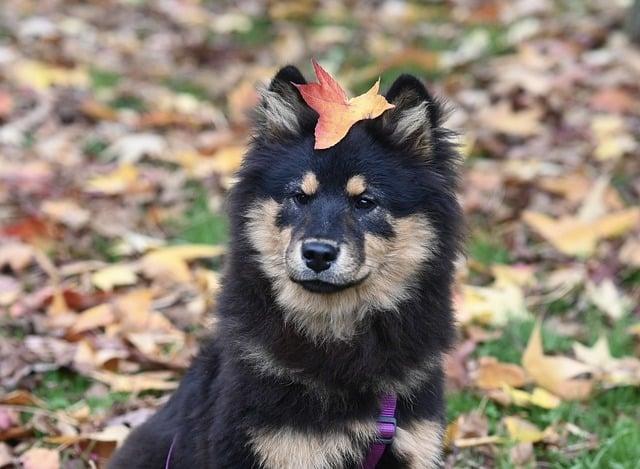In a bustling city, a dog trainer named Sarah faced her toughest challenge yet: a spirited Afghan Hound named Max. Known for their independent nature, Max seemed to dance to his own tune, ignoring commands and chasing butterflies instead. Frustrated but determined, Sarah discovered that building a bond through play and patience was key. Slowly, Max transformed, showcasing his intelligence and grace. This experience taught Sarah that the hardest dog to train isn’t just a challenge; it’s an opportunity to deepen the connection between human and canine. With the right approach, any dog can shine.
Contents
- Understanding the Challenges of Training Difficult Dog Breeds
- Identifying Key Traits That Contribute to Training Difficulty
- Effective Training Strategies for Hard-to-Train Dogs
- Choosing the Right Professional Help for Training Success
- Q&A
Understanding the Challenges of Training Difficult Dog Breeds
Training a dog can be a rewarding experience, but certain breeds present unique challenges that can test even the most patient and experienced trainers. These breeds often possess strong-willed personalities, high energy levels, and sometimes a stubborn streak that can complicate the training process. Understanding these characteristics is crucial for anyone considering bringing a difficult breed into their home.
One of the primary challenges with training certain dog breeds is their independence. Breeds such as the Afghan Hound or the Basenji are known for their self-reliant nature, which can make them less responsive to commands. This independence can lead to a lack of motivation to follow instructions, requiring trainers to employ more creative and engaging methods to capture their attention. Techniques such as positive reinforcement and interactive play can be particularly effective in overcoming this hurdle.
Another significant factor is the energy level of these breeds. High-energy dogs like the Border Collie or the Belgian Malinois need ample physical and mental stimulation to thrive. Without sufficient exercise and engagement, these dogs may become bored and develop undesirable behaviors, making training even more challenging. Establishing a consistent routine that includes regular exercise, mental challenges, and socialization is essential for success in training these energetic breeds.
Lastly, some breeds are known for their strong protective instincts, which can complicate training efforts. Breeds such as the Rottweiler or the German Shepherd may exhibit territorial behaviors that require careful management. Trainers must establish themselves as the pack leader while ensuring that the dog feels secure and understood. This balance is crucial to fostering a trusting relationship, allowing for more effective training sessions that focus on obedience and socialization.
Identifying Key Traits That Contribute to Training Difficulty
When considering the challenges of dog training, several key traits can significantly influence a dog’s trainability. **Temperament** plays a crucial role; dogs that are naturally more independent or stubborn may resist commands, making training sessions more arduous. Breeds known for their strong-willed nature, such as the Afghan Hound or the Basenji, often require a trainer with patience and persistence to achieve success.
Another important factor is **intelligence**. While many people assume that a highly intelligent dog will be easier to train, this is not always the case. Some intelligent breeds, like the Border Collie, may become bored quickly if training lacks variety or stimulation. This can lead to undesirable behaviors, as these dogs seek out their own forms of entertainment. Therefore, understanding a dog’s cognitive needs is essential for effective training.
Lastly, **sociability** and **fearfulness** can greatly affect a dog’s ability to learn. Dogs that are overly shy or anxious may struggle to engage with their trainers or the environment, leading to slower progress. Breeds that are more reserved, like the Shiba Inu, may require additional socialization and positive reinforcement to build confidence. Understanding a dog’s social tendencies is vital for creating a supportive training atmosphere that fosters learning and growth.
Effective Training Strategies for Hard-to-Train Dogs
Training a dog that seems resistant to learning can be a daunting task, but with the right strategies, success is within reach. **Consistency** is key; establishing a routine helps your dog understand what is expected of them. Use the same commands and cues every time, and ensure that all family members are on the same page. This uniformity reduces confusion and reinforces learning, making it easier for your dog to grasp new concepts.
Incorporating **positive reinforcement** is another powerful strategy. Reward your dog with treats, praise, or playtime whenever they exhibit desired behaviors. This approach not only motivates them to repeat those behaviors but also strengthens the bond between you and your pet. Remember, the rewards should be immediate and relevant to the behavior to create a clear connection in your dog’s mind.
Engaging your dog in **mental stimulation** activities can also aid in training. Hard-to-train dogs often have excess energy or boredom that can lead to stubbornness. Incorporate puzzle toys, interactive games, or obedience training sessions that challenge their minds. This not only keeps them occupied but also makes training sessions more enjoyable and effective, as a tired dog is often more receptive to learning.
Lastly, consider seeking the help of a **professional trainer** or attending obedience classes. A skilled trainer can provide tailored strategies and insights that cater to your dog’s unique personality and challenges. Group classes also offer socialization opportunities, which can be beneficial for hard-to-train dogs. With expert guidance and a supportive environment, you can turn training into a rewarding experience for both you and your furry companion.
Choosing the Right Professional Help for Training Success
When it comes to training a challenging breed, enlisting the right professional help can make all the difference. Not all trainers are created equal, and finding one who understands the unique needs of your dog is crucial. Look for trainers who specialize in the specific breed you own or have experience with similar temperaments. This ensures they are well-equipped to handle the quirks and challenges that come with training a more stubborn or independent dog.
Consider the trainer’s qualifications and methodologies. A professional with a solid background in canine behavior and positive reinforcement techniques is often more effective than one who relies on outdated methods. **Ask for credentials** such as certifications from recognized organizations, and inquire about their training philosophy. A trainer who emphasizes building a bond with your dog through trust and respect will likely yield better results than one who uses fear or intimidation.
Another important factor is the trainer’s ability to communicate effectively with both you and your dog. Training is not just about the dog; it’s also about educating the owner. **Look for trainers who offer** clear explanations and demonstrations, ensuring you understand the techniques being used. This collaborative approach not only enhances your dog’s learning experience but also empowers you to continue training at home.
consider the trainer’s reputation within the community. **Seek out reviews and testimonials** from other dog owners who have faced similar challenges. A trainer with a proven track record of success with difficult breeds will give you confidence in their abilities. Don’t hesitate to ask for references or to observe a training session before committing. The right professional help can transform your training journey, turning frustration into success.
Q&A
-
What breeds are considered the hardest to train?
Some of the breeds often cited as the hardest to train include:
- Afghan Hound
- Basenji
- Bulldog
- Chow Chow
- Jack Russell Terrier
These breeds may exhibit strong-willed or independent traits, making training more challenging.
-
Why are some dogs harder to train than others?
Training difficulty can stem from various factors, including:
- Temperament: Some dogs are naturally more stubborn or independent.
- Intelligence: Highly intelligent breeds may become bored with repetitive tasks.
- Energy Levels: High-energy dogs may struggle to focus during training sessions.
Understanding these traits can help owners tailor their training approaches effectively.
-
Can hard-to-train dogs still be trained successfully?
Absolutely! With the right techniques and patience, even the most challenging breeds can be trained. Key strategies include:
- Positive reinforcement: Rewarding desired behaviors encourages learning.
- Consistency: Regular training sessions help reinforce commands.
- Engagement: Keeping training sessions fun and stimulating can maintain a dog’s interest.
Commitment and understanding are essential for success.
-
What should I consider before choosing a dog breed?
Before selecting a breed, consider the following:
- Your experience level with dogs.
- The time you can dedicate to training and exercise.
- Your living situation and lifestyle.
Choosing a breed that aligns with your lifestyle can lead to a more harmonious relationship and successful training experience.
while some breeds may present training challenges, understanding their unique needs and characteristics can pave the way for success. With patience and the right approach, even the hardest dogs can become well-behaved companions. Embrace the journey!

大家好,我是彼得潘,專業的手法身體治療師。我喜歡探索和研究各種主題,並透過與人工智慧的合作分享專業、實用、有趣的文章。我們定期進行人工審核,以確保內容的準確性。如果您發現文章中有任何不準確的地方,請隨時與我們聯繫,我們會及時糾正。您可以透過 [email protected] 與我們聯繫。



